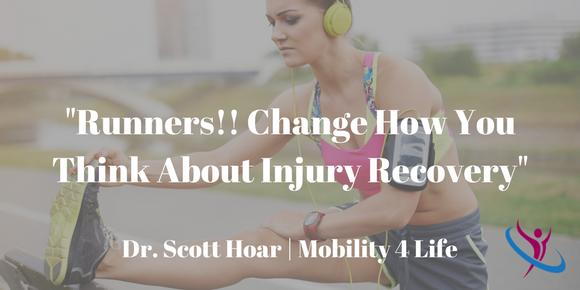
I see running injuries regularly at my chiropractic and sports medicine clinic in Boynton Beach, so thought it would be useful to go over the most common running injuries I see and how to facilitate their recovery, including:
- ITB (Iliotibial Band Syndrome)
- Plantar Fasciitis
- Achilles Tendoniti s/Tendonosis
- Runner's Knee
- Meniscus Tear
- Shin Splints
Now, I am not a runner. Whenever I have to run more than 3.2 miles, I start to have a mental breakdown. I have, however, treated a great deal of runners in pain. As a sports medicine chiropractor, I see more runners than almost any other subgroup of patients (including CrossFit-ers!). If I've learned one thing from runners is that you guys are going to run. Telling a runner not to run is like telling someone from Buffalo, NY not to eat Buffalo wings... it's just not going to happen. Ok, I can deal with that, BUT what I'd like to recommend is that you commit to making a few priorities during your recovery that will help you along the way.
1. Make Sure Your Toes and Ankles Are Flexible
If the ankles or toes are too stiff, you'll be adding a great deal of stress to your lower body with every step you take. Try both of these exercises and see if you have any discomfort. Here are my favorite two home exercises that can be done to accomplish that:
2. Try for a Personal Record on your "One Mile" Time
Rather than trying to run through the pain at your normal distance or stopping running altogether, while you are recovering from one of these injuries focus on improving your short distance running time. Work only on one mile and try to improve your run time. Only do this 1 to 2 times a week so you minimize how much time you're actually running. One mile will minimize the pounding impact on your body as well (assuming you normally run further) and still let you get in a little running "fix". You would be working on increasing the short term intensity, but lowering your overall work volume and pounding on your body.
3. Get your 'Exercise Prescription'
The majority of runners I see have imbalances in their hips. The imbalances normally involve weak lateral stabilizers like the gluteus medius, gluteus maximus, etc. Such imbalances open the door to all of those injuries I mentioned above. An exercise prescription is when you get evaluated by a movement specific sports medicine professional that is able to see where your body's shortcoming are, then prescribe the specific exercise, stretch, strategy, etc that you need to minimize your chance of injury and increase performance.
4. Try Some Resistance Training
Running is a single leg activity. At most times during running (unless you're going pretty slow), only one leg is touching the ground. From this single leg stance, you are expected to maintain proper posture and position of your pelvis, your hips, and torso. Unfortunately, most runners lack the strength and stability in those stabilizing muscles needed to be able to maintain proper positioning, which will again. . . . open the door to injury. PLEASE consider a resisting training program 1-2 days a week which will help build up your stabilizing muscles and reduce your risk of running-related injury . Prioritize single leg strength exercises such as lunges, reverse lunges, split squats, steps ups, etc.